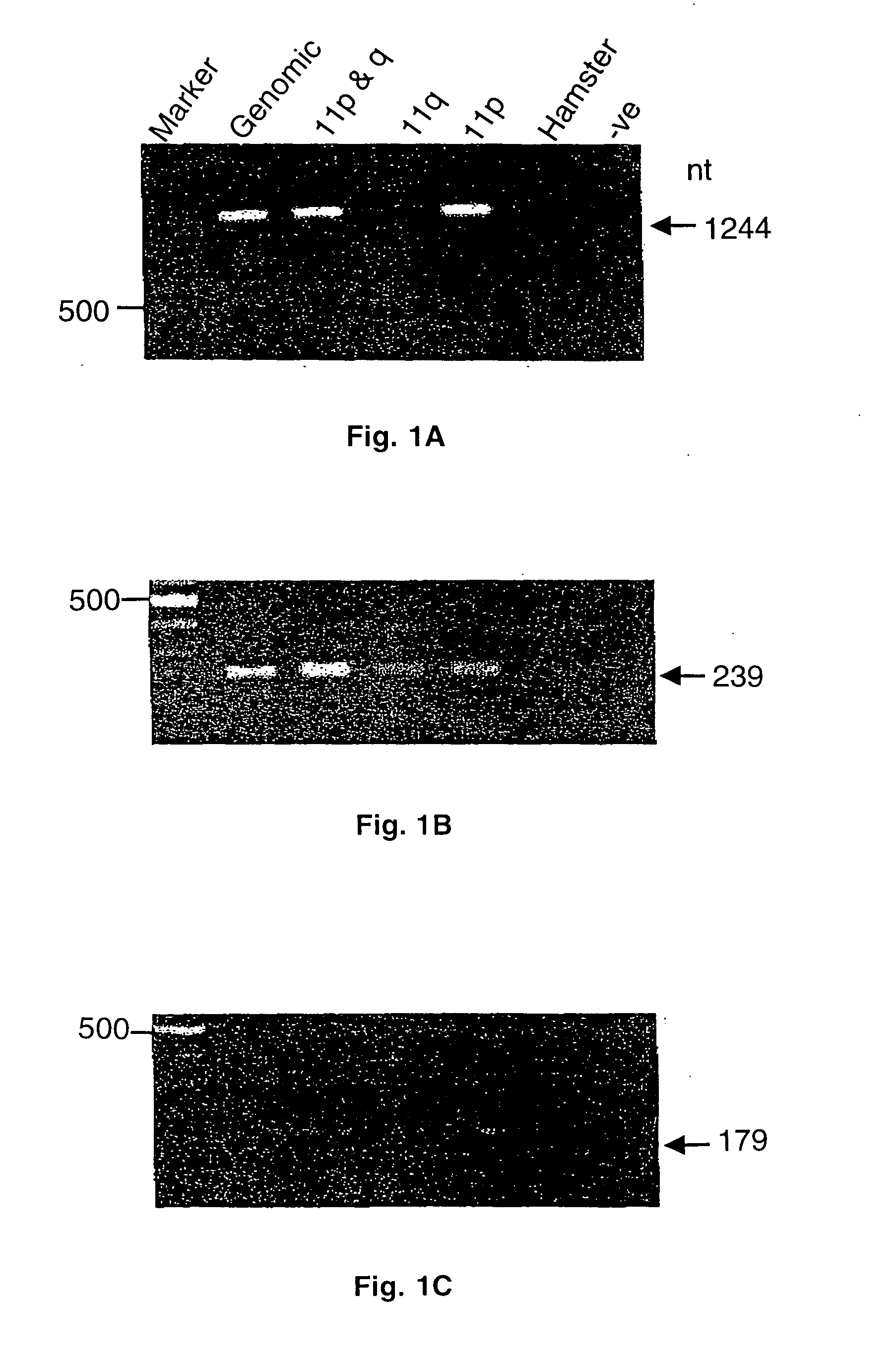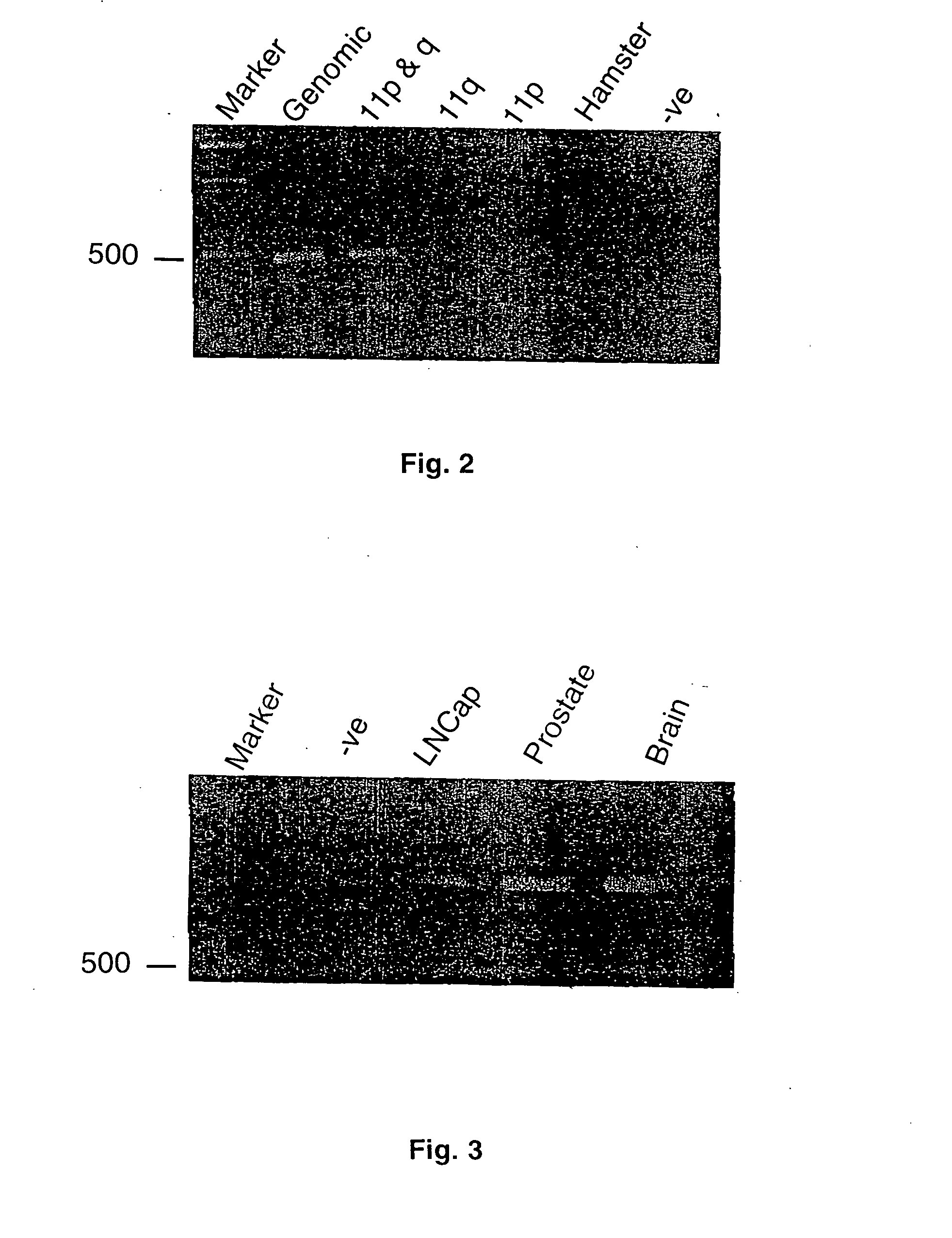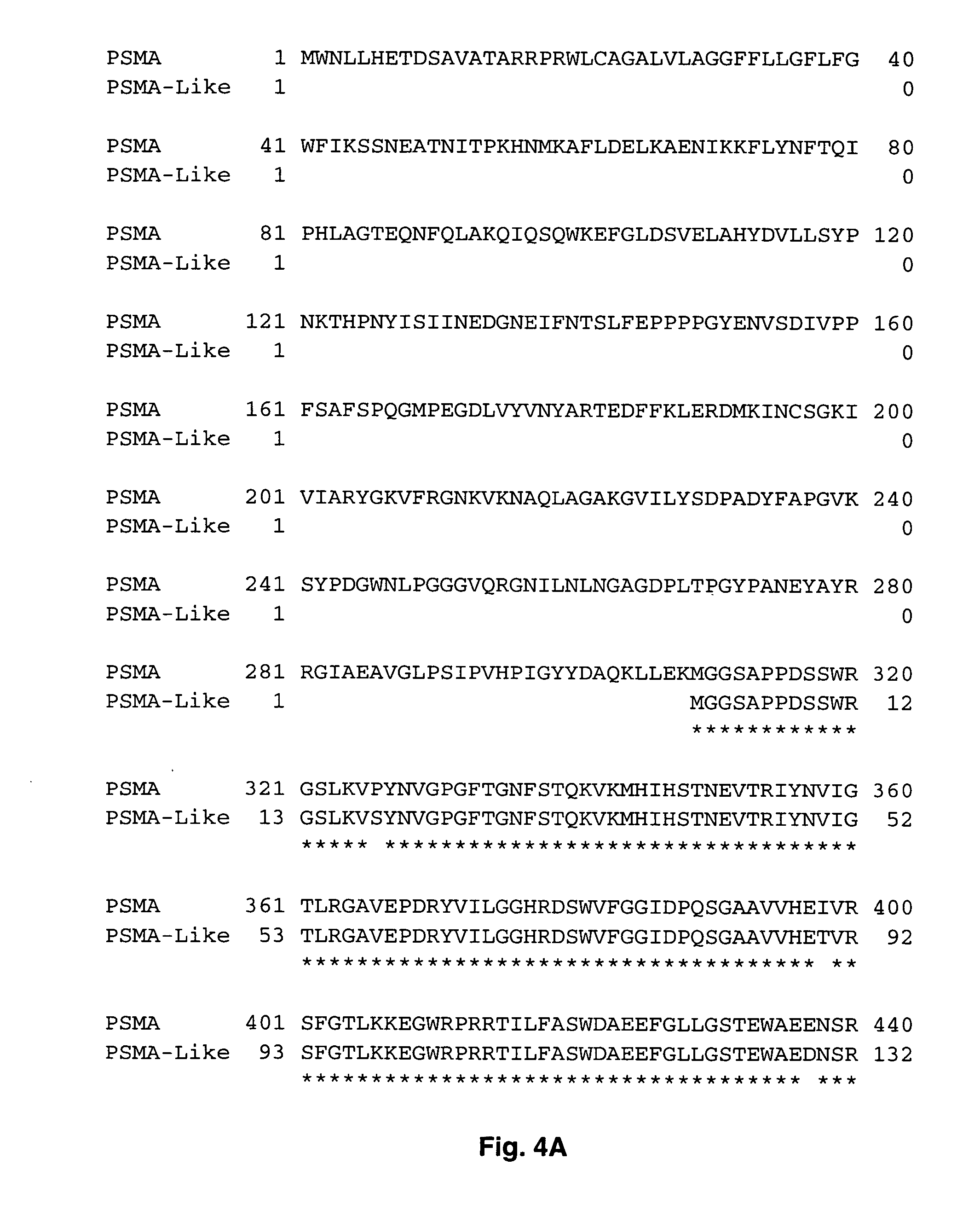DNA encoding the prostate-specific membrane antigen-like gene and uses thereof
a prostate-specific membrane antigen and gene technology, applied in the field of cell biology, can solve the problems of limited value of psa, inability to identify prior art, and inability to provide patients with options, and achieve the effect of inhibiting cell death
- Summary
- Abstract
- Description
- Claims
- Application Information
AI Technical Summary
Benefits of technology
Problems solved by technology
Method used
Image
Examples
example 1
[0069] Differentiating the PSMA Gene from the PSMA-Like Gene
[0070] To map the human PSMA gene and resolve the controversy regarding its true location (11p versus 11q), a number of primer pairs were designed with homology to various regions of the PSMA gene, including introns. These primers were then used to amplify DNA from the NIGMS somatic cell hybrid mapping panel which consists of a hybrid containing chromosome 11, one containing chromosome 11p, one containing 11q and a hamster parental line. While the amplified regions of exon 16, intron n-o (primers used correspond to nt 54278-54536 in the PSMA genomic sequence and encompass exon 15 of the PSMA gene) and intron 6 are found on both chromosome 11p and 11q, the promoter region of the PSMA gene is only amplified from the hybrid containing chromosome 11p (see FIG. 1). The fact that intron sequences are present also confirms that the gene on chromosome 11q is not a pseudogene, but in fact, a gene duplication.
[0071] Intron-based pr...
example 2
[0073] Evidence for a Novel PSMA Splice Variant
[0074] As analysis of the brain and prostate PSMA and PSMA-like genes was being carried out, RT-PCR of the terminal region of the PSMA gene detected an alternate splice form of PSMA present in LNCaP cells and normal prostate that is not present in normal brain (see FIG. 3). This appears to be a novel splice variant of PSMA and the expression pattern of this variant is evaluated in prostate and other tissues.
example 3
[0075] Screening for Ligands of PSMA / PSM′
[0076] It has previously been reported that mitochondrial aspartate-aminotransferase (mAAST) binds to PSMA, since it co-elutes with PSMA from affinity columns made with the 7E11C5.3 antibody [27]. Using a similar isolation method, co-elution with PSMA of a protein of the size expected for mAAST from LNCaP cells was demonstrated. However, this protein is apparently not a PSMA ligand, as it is also eluted from the same 7E11C5.3 affinity column that has been treated with protein lysate from non-PSMA expressing PC3 cells.
[0077] The yeast-two-hybrid system is also being used to screen for PSMA ligands. To date, six million clones have been screened from a prostate library and six different, consistently interacting clones have been identified. Significantly, one of the positive clones corresponds to Survivin, a recently cloned apoptosis inhibitor which is highly expressed in prostate tumors, but is not typically expressed in terminally differenti...
PUM
| Property | Measurement | Unit |
|---|---|---|
| Cell death | aaaaa | aaaaa |
| Size | aaaaa | aaaaa |
| Cytotoxicity | aaaaa | aaaaa |
Abstract
Description
Claims
Application Information
 Login to View More
Login to View More - R&D
- Intellectual Property
- Life Sciences
- Materials
- Tech Scout
- Unparalleled Data Quality
- Higher Quality Content
- 60% Fewer Hallucinations
Browse by: Latest US Patents, China's latest patents, Technical Efficacy Thesaurus, Application Domain, Technology Topic, Popular Technical Reports.
© 2025 PatSnap. All rights reserved.Legal|Privacy policy|Modern Slavery Act Transparency Statement|Sitemap|About US| Contact US: help@patsnap.com



